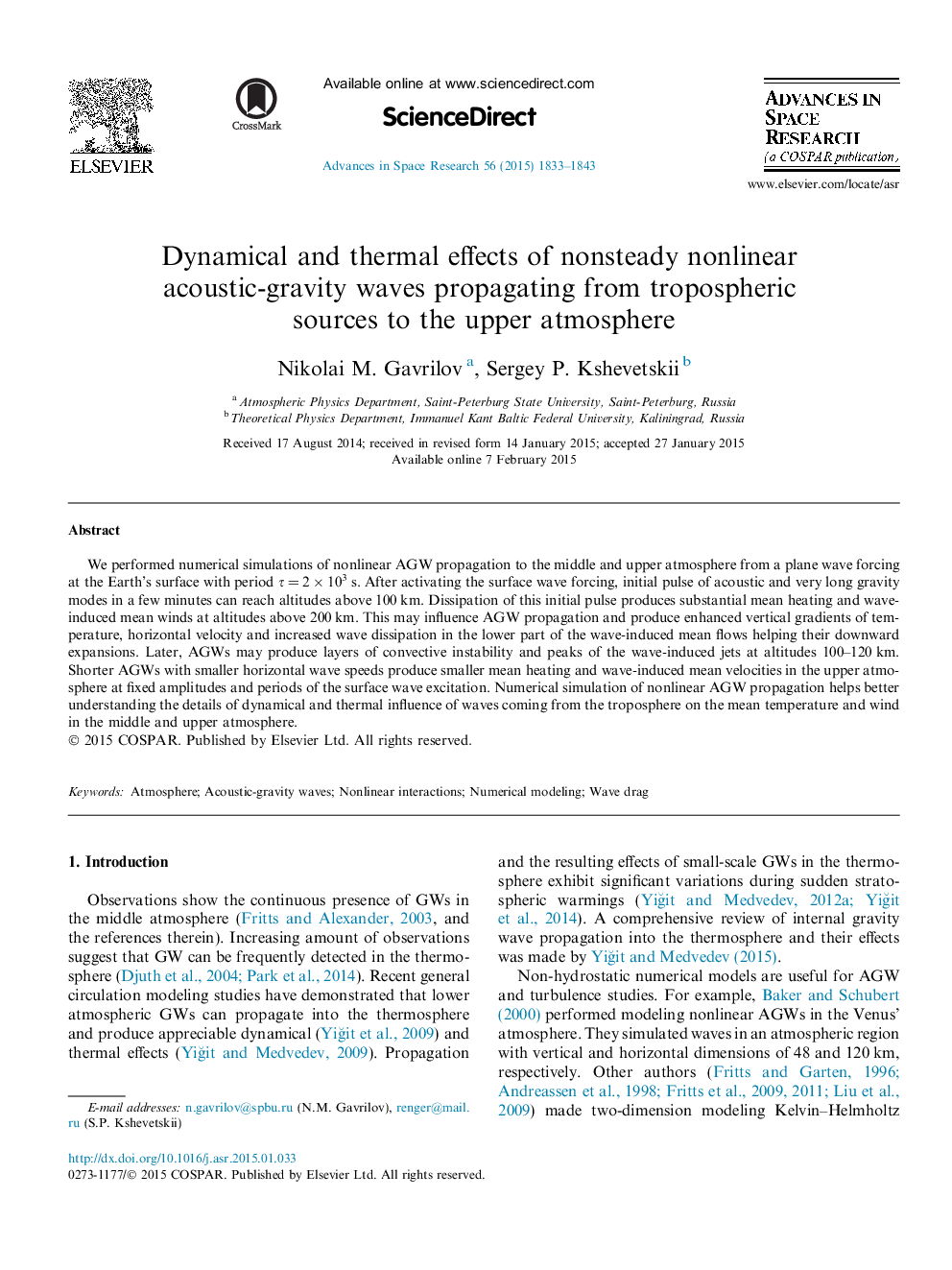| Article ID | Journal | Published Year | Pages | File Type |
|---|---|---|---|---|
| 1763644 | Advances in Space Research | 2015 | 11 Pages |
Abstract
We performed numerical simulations of nonlinear AGW propagation to the middle and upper atmosphere from a plane wave forcing at the Earth's surface with period ÏÂ =Â 2Â ÃÂ 103Â s. After activating the surface wave forcing, initial pulse of acoustic and very long gravity modes in a few minutes can reach altitudes above 100Â km. Dissipation of this initial pulse produces substantial mean heating and wave-induced mean winds at altitudes above 200Â km. This may influence AGW propagation and produce enhanced vertical gradients of temperature, horizontal velocity and increased wave dissipation in the lower part of the wave-induced mean flows helping their downward expansions. Later, AGWs may produce layers of convective instability and peaks of the wave-induced jets at altitudes 100-120Â km. Shorter AGWs with smaller horizontal wave speeds produce smaller mean heating and wave-induced mean velocities in the upper atmosphere at fixed amplitudes and periods of the surface wave excitation. Numerical simulation of nonlinear AGW propagation helps better understanding the details of dynamical and thermal influence of waves coming from the troposphere on the mean temperature and wind in the middle and upper atmosphere.
Related Topics
Physical Sciences and Engineering
Earth and Planetary Sciences
Space and Planetary Science
Authors
Nikolai M. Gavrilov, Sergey P. Kshevetskii,
